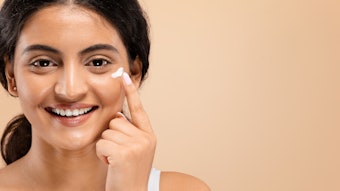
This work measures the antioxidant potential of a hydrolyzed cicer seed extract, a multi-peptide derived from chickpeas, to protect hair. Advanced methods such as FTIR, DCFH-DA assays, cyclic fatigue and DSC testing are combined for a comprehensive view.
Human hair, composed mainly of keratin, sulfur-bound compounds and lipids, is inherently vulnerable to oxidative damage caused by environmental factors such as ultraviolet (UV) radiation and ozone.1, 2 UV exposure in particular triggers photochemical reactions that degrade hair proteins, weaken disulfide bonds in the cortex and compromise the cuticle. This results in visible signs of damage such as reduced strength and dry, brittle texture, among other types of damage.2-4 Despite significant research into oxidative hair damage,6-10 the complexity of these processes means there is still much to discover, especially in terms of protective solutions.
This study explores the impact of oxidative damage to the hair structure using a combination of spectroscopic and physical measurement techniques. These include: fluorescence spectroscopy with the DCFH-DA (2'-7'-dichlorodihydrofluorescein diacetate) assay, modified from Cathcart, et al.,17 to quantify reactive oxygen species (ROS) generated by photooxidation; Fourier Transform Infrared (FTIR) spectroscopy to evaluate cysteine oxidation; differential scanning calorimetry (DSC) to evaluate structural changes in the hair cortex; and cyclic fatigue to assess the overall mechanical impact of UV on hair fiber strength.
The present work also examines the potential of a hydrolyzed cicer seed extract (HCSE)a – a multi-peptide derived from chickpeas – to impart protective antioxidant effects in hair. Chickpeas are known for their potent antioxidant properties thanks to the presence of bioactive peptides. HCSE is classified as a multi-peptide, as it is a mixture of low molecular weight oligopeptides averaging 850 Da.
Previous work (not shown) has demonstrated HCSE’s ability to shield the hair from oxidative stress, preserve structural integrity and maintain overall hair health when applied via solutions and conditioner treatments. This investigation provides new insights into the science of hair protection, offering a comprehensive approach to combat environmental damage while maintaining hair health throughout its lifetime – i.e., hair’s longevity.
Materials and Instruments
Hair samples: Virgin medium brown was purchased for the described testsb.
Test formulations: A rinse-off and leave-on conditioner were also developed for the various tests containing (or not, placebo) 0.25% and 1.0% (HCSE) solution (see Formulas 1 and 2, below). A basic shampoo was additionally developed to cleanse hair between tests.
Test instruments: As noted in the introduction, various methods were combined for the described tests. Key instruments included: An NO2/NO/O3 generatorc, a weatherometerd, an ATR-FTIR systeme, a cyclic fatigue testerf, a differential scanning calorimeterg and a xenon weatherometerh.
Experimental Protocols
Test protocols were carried out as follows.
DCFH assay: The DCFH assay provides for the sensitive quantification of reactive oxygen species (ROS) in response to oxidative stress, which can be measured using a 2’-7’-dichlorofluorescine (DCFH) probe. This probe turns to its highly fluorescent 2′,7′-dichlorofluoresceine analogue upon oxidation, with the fluorescence intensity being proportional to the amount of oxidation.
Treated hair tresses (described next) were UVA-irradiated (10 J/cm2) and immediately after irradiation, DCFH was added to the hair tresses for 30 min at 37°C. The fluorescence was recorded with a microplate reader. A study of variances and an unpaired t-test were applied on the values for statistical significance of the results.
- Hair leave-on solution treatment: Hair was treated at a ratio of 400 mg of hair to 8 mL of water with the 0.25% or 1.0% active HCSE formula (or not, placebo; see Formula 2, below) in water, mimicking a simple leave-on system. After 10 min, hair was spread on absorbent paper until dry.
- Hair rinse-off conditioner treatment: Hair tresses were prepared and wetted using tap water. Each tress was treated with an equal amount of the placebo conditioner and a conditioner containing either 0.25% or 1.0% active HCSE (see Formula 1, below). Formulations were applied as treatment masks. After 10 min, tresses were rinsed under tap water and left to dry naturally without the use of hair dryer.
ATR-FTIR test protocol: Virgin Caucasian hair bundles were exposed to UV and ozone in a pollution chamber with gas produced by an NO2/NO/O3 generatorc, then placed into a weatherometerd. Hair was shampooed with 15% SLES, rinsed with tap water for 30 sec, blow dried and divided into two groups. One group was treated with DI water (placebo) and the other was treated with a 1.0% active HCSE solution, both for one hour. Surface FTIR spectrum was measurede for each group as a baseline before pollution exposure.
Treated hair samples were then spread into a thin layer in the pollution chamber for UV/ozone exposure for 2 hr (UV: 0.67 W/m2 irradiance (0.24 J/cm2/hr), 540 ppb ozone). The treatments and pollution procedure were repeated for 12 cycles (@2 hr per cycle = 24 hr exposure, total), and UV/ozone polluted hair was assessed again with FTIR to determine the change in cysteic acid peak.
Cyclic fatigue and DSC methods:
- Rinse-off treatment protocol: Hair was first cleansed with the basic shampoo in Formula 3 (see below), then conditioned with respective conditioners in Formula 1 (see below) for 10 min. Hair tresses were rinsed with tap water for 30 sec and air dried. After treatment, hair tresses were assessed via cyclic fatiguef and DSCg before UV damage, then exposed to UVh (18 J/cm2/hr, 6 hr per cycle, equal to 1 day of UV exposure). The treatment/UV exposure protocol was repeated for 20 cycles, and hair was assessed again to quantify the damage level at 10-cycle intervals.
- Leave-on treatment protocol: Hair was first cleansed with the basic shampoo in Formula 1 (see below), then treated with respective conditioners in Formula 2 at a 2.5/10 ratio of product to hair. The product was massaged onto hair tresses for 1 min and hair was left unrinsed. Tresses were left to air dry overnight. These steps were repeated for each equivalent cycle of UV exposure, up to 30 cycles. Cyclic fatiguef and DSC measurementsg were taken before and after UV exposure.
- Cyclic fatigue testing condition: For each treatment group, 50 single hair fibers were randomly selected and equilibrated under controlled 50% relative humidity for 2 hr prior to testing. Cyclic fatigue testingf was conducted at constant strain mode with a target strain of 5%, strain rate of 40 mm/sec, and the characteristic lifetime (α) of hair fibers were measured.
- DSC testing condition: The denaturation temperature (Td) and denaturation enthalpy (ΔHd) of hair samples with different treatments were determined using 5-7 mg of powder hair samples in water.9 The temperature range used was 50-190°C and the heating rate was 10°C/min.
Results: DCFH-DA
Tables 1 and 2 (see below) detail the DCFH-DA assay results comparing the amount of ROS produced before and after UVA irradiation and the protective effect of treatments with and without HCSE. As shown in Table 1, when incorporated in a leave-on solution, HCSE induced strong, significant and dose-dependent antioxidant protection against UVA-induced oxidation. A 60% and 65% reduction in ROS production was observed with HCSE at 0.25% and 1.0%, respectively. The efficacy of HCSE was also observed on non-irradiated hair, with a 45% and 51% reduction in ROS with HCSE at the same respective use levels.
When incorporated in a rinse-off conditioner (see Table 2), HCSE exhibited a strong and significant antioxidant effect, with a 50% reduction in ROS at 1.0% HCSE. A protective effect was also observed with HCSE at 0.25% compared with the placebo, although not significant. This could potentially be due to not enough antioxidant deposition from the rinse-off application. Nevertheless, the antioxidant efficacy of HCSE at 1.0% was also observed on non-irradiated hair.
Results: FTIR
Exposure to UV radiation and ozone can lead to the photodegradation of disulfide bonds in the hair cortex, inducing oxidation of cysteine to cysteic acid,10 as marked at the 1040 cm-1 location in the example FTIR spectrum shown in Figure 1 (see below). Based on the test data, Figure 2 (see below) shows a significant increase in the cysteic acid peak height with the placebo-treated hair after 24 hr of UV/ozone exposure, compared with the same control prior to exposure. In contrast, hair treated with 1.0% HCSE exhibited 14% less cysteine oxidation compared with the placebo, as indicated by a smaller cysteic acid peak height, suggesting a significant antioxidant protective effect.
Results: Cyclic Fatigue and DSC Measurements
In assessing hair fiber strength and overall structural integrity, after 20 and 30 consecutive cycles, hair fibers treated with either rinse-off or leave-on conditioners were tested via cyclic fatigue testing for their ability to withstand mechanical breakage. Using this method, a characteristic lifetime (α) was calculated from the Weibull analysis.11 This parameter represents the number of cycles at which 63.2% of fibers have failed, with an increase in characteristic lifetime indicating a stronger, more resilient hair fiber.
The data showed that the treatment of virgin Caucasian hair with conditioners containing HCSE provided superior protection, preserving fiber strength after prolonged UV exposure, compared with the placebo conditioner. As highlighted in Figures 3 and 4 (see below), this protective effect was seen in both leave-on and rinse-off formulations.
Figure 3 shows an approximate 51% reduction in hair fiber strength before and after the UV exposure of hair treated with the placebo rinse-off conditioner. In contrast, treatment with the HSCE rinse-off conditioner decreased the reduction in fiber strength by only 6.7%. For the leave-on treatments (see Figure 4), placebo-treated hair exhibited a 46% decrease in hair strength post UV exposure, whereas strength was maintained with the HCSE-treated hair even after 30 cycles of UV exposure.
The DSC data in Figure 5 (see below) shows that the denaturation temperature of hair treated with all rinse-off conditioner formulations decreased after 10 and 20 cycles of UV exposure, versus treated hair that was not UV damaged. After a prolonged 20 cycles of UV exposure, hair treated with the HCSE antioxidant was protected, as denoted by the statistically higher Td compared to the placebo conditioner-treated hair. No significant difference in denaturation enthalpy ∆H was observed between either rinse-off treatment with or without HCSE.
The leave-on conditioner results (see Figure 6 below) were similar to those observed with the rinse-off applications: the denaturation temperature decreased for all the treatments after 10, 20 and 30 cycles of UV exposure. However, the HCSE leave-on treatments exhibited significantly less of a decrease and higher Td compared with those treated with the placebo leave-on treatment after 20 and 30 cycles. This demonstrates a protective antioxidant effect over a prolonged UV exposure period.
The denaturation enthalpy (∆H) in Figure 7 (see below) also demonstrated a statistically significant protective effect with the HCSE leave-on treatment, compared with placebo-treated hair after 30 cycles of UV exposure.
Discussion: DCFH-DA Assay to Quantify Oxidative Stress-induced ROS
DCFH-DA is a widely used technique to measure hydroxyl, peroxyl and other ROS activity in cells,12 though it is rarely applied to measure ROS activity in UV exposed hair. Here, the DCFH-DA probe was prepared using a NaOH solution, since it cannot be metabolized by the hair. This gives a chemical separation of diacetate from DCFH and, once buffered, the probe can then react with peroxides to fluoresce. This approach was thereby used to quantify the amount of ROS generated in virgin Caucasian hair samples upon UVA irradiation.
The results in Figures 4 and 5 (see below) confirmed that UVA irradiation indeed provoked a significant generation of ROS in all treated and untreated hair samples. However, treatment with HCSE was shown to provide antioxidant protection, reducing the production of ROS upon UVA irradiation, compared with the untreated hair or hair treated with a placebo conditioner. A dose-dependent effect was also observed when HCSE was increased from 0.25% to 1.0% in the leave-on application.
Significant antioxidant protection efficacy was also delivered from a rinse-off conditioner with HCSE at 1.0%, although no significant benefit was observed at the lower concentration of 0.25%. This could be attributed to potential competition of other ingredients (i.e., conditioning agents) for the surface of the hair, coupled with an insufficient amount of antioxidant deposited from the rinse-off format. Furthermore, antioxidant protection was also delivered on non-irradiated hair samples from both leave-on applications as well as the 1.0% rinse-off application.
Notably, HCSE cultivated from different sources was previously studied for its antioxidant composition and structure.13, 14 The use of pea peptide hydrolysate as an antioxidant in a cosmetic composition was also reported in patent EP 2 588 075 B1.15 However, this study appears to be the first to explore the antioxidant effect of HCSE against UVA-induced hair damage using the DCFH-DA method.
Discussion: FTIR to Assess Cysteine Oxidation
In this study, virgin Caucasian hair was exposed to a combination of UV and ozone to mimic environmental pollution and in relation, HCSE was evaluated for its ability to minimize the conversion of cysteine to cysteic acid. In FTIR spectra, position and band intensity provide information about molecular species present in a sample.
For instance, protein content in the hair is related to the Amide I band at 1645 cm-1. The IR band around 1040 cm-1, specific to cysteic acid (see Figure 1 below), was used in this study to evaluate oxidative damage in the hair – as it is known from the literature that photooxidation of cysteine to cysteic acid can be used as a measure of oxidative damage.1, 5, 6
Ten scans per hair tress were taken for each treatment group. All spectra were normalized to the Amid I peak and data was analyzed using a software and second derivative technique. The average second derivative spectra focus on the cysteic acid region was analyzed and cysteic acid peak height was calculated.
As expected, the data in Figure 2 (see below) showed a significant increase in cysteic acid peak height with the placebo and HCSE-solution treated hair after 24 hr of UV/ozone exposure, compared to the non-irradiated control. However, the cysteic acid peak height of the HCSE-treated hair was statistically less than that of the placebo-treated hair, demonstrating a 14% reduction in cysteine oxidation, thereby confirming the antioxidant protection efficacy of HCSE.
Discussion: Cyclic Fatigue, DSC to Measure Preservation of Fiber Strength, Integrity
The mechanical impact of prolonged UV exposure (up to 20 cycles for the leave-on and 30 cycles for the rinse-off systems) was investigated using cyclic fatigue testing. The characteristic lifetime (α) of hair tresses was calculated from the Weibull analysis of the number of cycles to break the hair fibers. The results highlighted in Figures 3 and 4 (see below) demonstrated the ability of HCSE to protect hair. The ingredient maintained the strength of virgin Caucasian hair treated with a rinse-off and leave-on conditioner systems after 20 and 30 cycles of UV exposure, respectively, compared with placebo conditioner-treated hair.
Lastly, the structural integrity of hair was evaluated using DSC, a technique that induces the complete denaturation of hair proteins in a controlled heating cycle. Two thermal parameters were measured: the denaturation temperature (Td) and denaturation enthalpy (∆H). Td is the maximum temperature of the denaturation process and represents the thermal stability of the helical proteins in hair. Denaturation enthalpy (∆H) is the energy absorbed during unfolding of the α-helical material in the intermediate filament of human hair.9, 16
The DSC data in Figures 5-7 (see below) compares the changes in Td and ∆H before and after UV exposure with the various treatments. Results showed a significant decrease with all treatments, rinse-off and leave-on, in both thermal parameters after multiple cycles of UV irradiation compared to non-irradiated hair. However, after 20 cycles of UV exposure, hair treated with the rinse-off HCSE conditioner exhibited statistically higher Td compared with the placebo conditioner-treated hair (see Figure 5).
No significant difference was observed in the denaturation enthalpy ∆H among the rinse-off treatments. From the leave-on application, a significantly less reduction in both Td and ∆H was observed with the HCSE conditioner treatment versus the placebo treatment after prolonged UV exposure, indicating the ingredient protected hair’s structural integrity (see Figures 6 and 7 below).
Conclusion
This study provides compelling evidence that the described hydrolyzed cicer seed extract (HCSE)a, a multi-peptide with potent antioxidant properties, offers multi-faceted protection against oxidative stress and environmental damage to human hair. Through advanced methodologies such as FTIR, DCFH-DA assays, cyclic fatigue and DSC testing, the ingredient’s effectiveness in mitigating UV- and ozone-induced damage was demonstrated.
In summary, the findings presented here show that HCSE:
- reduced ROS levels and demonstrated significant antioxidant activity;
- reduced UV-induced cysteine oxidation, in turn preserving the structural integrity of the cortex; and
- improved mechanical resilience including strength and durability, suggesting enhanced matrix cross-link density and structural integrity.
Taken together, the results show how different instrumental measurements provide unique and complementary insights into the damaging effects of UV on human hair. This multi-faceted approach provides a comprehensive understanding of hair damage and, in the present work, demonstrates the protective efficacy of the novel HCSE ingredient. The ingredient is therefore proposed as a robust, multi-peptide solution to protect hair against oxidative damage, ultimately promoting hair health and longevity.
Author’s note: The authors wish to acknowledge the significant contributions of Neil James and Kate Thornton in the development of this technology.
Footnotes
a FibraShield C (INCI: Aqua (and) Hydrolyzed Cicer Seed Extract) is a product of Croda.
b International Hair Importers
c NO2/NO/O3 generator, Model 713, 2B Technologies
d Q-Sun 3100 Weatherometer, Q-Lab, Inc.
e ATR-FTIR spotlight System 400, PerkinElmer, Inc.
f Cyclic Fatigue Tester CYC802, Dia-Stron
g Differential Scanning Calorimeter Q250, TA Instruments
h Xenon Weather-Ometer CI3000+, Atlas
References
1. Swift, J.A. (1997). Fundamentals of Human Hair Science. Micelle Press, Dorset, England.
2. Robbins, C.R. (2002). Chemical and Physical Behavior of Human Hair. Fourth ed. Springer, New York.
3. Nogueira, A.C.S. and Joekes, I. (2004). Hair color changes and protein damage caused by ultraviolet radiation. Journal of Photochemistry and Photobiology B: Biology, 74 109-117.
4. Hoting, E., Zimmermann, M. and Hilterhaus-Bong, S. (1995). Photochemical alterations in human hair. I: Artificial irradiation and investigations of hair proteins. J Soc Cosmet Chem, 46, 85-99.
5. Signori, V. (2004). Review of the current understanding of the effect of ultraviolet and visible radiation on hair structure and options for photoprotection. Int J Cosmet Sci, 55, 95-113.
6. Nogueira, A.C.S., Diceliob, L.E. and Joekes, I. (2006). About photo-damage of human hair. Photochem Photobiol Sci, 5, 165-169.
7. Gao, T. and Bedell, A. (2001). Ultraviolet damage on natural gray hair and its photoprotection. J Cosmet Sci, 52, 103-118.
8. Giancola, G. and Malinauskyte, E. (2019). Adaptive measures: Translating UV protection to hair claims. Cosmetics & Toiletries, 134 (4) 35-46.
9. Wortmann, F.J., Springob, C. and Sendelbach, G. (2002). Investigations of cosmetically treated human hair by differential scanning calorimetry in water. J Cosmet Sci, 53, 219-228.
10. Grundman, C.B. (2018). Investigating prevention of UV damage to hair using Raman spectroscopy. J Cosmet Sci, 69, 357-362.
11. Evans, T.A (2009). Fatigue testing of hair – A statistical approach to hair breakage. J Cosmet Sci, 60(6), 599-616.
12. Wang, X and Roper, M.G. (2014). Measurement of DCF fluorescence as a measure of reactive oxygen species in murine islets of Langerhans. Anal Methods, 6(9) 3019-3024.
13. Mekky, R.H., Contreras, M.M. and El-Gindi, M.R. (2015). Profiling of phenolic and other compounds from Egyptian cultivars of hydrolyzed cicer seed extract (Cicer arietinum L.) and antioxidant activity: A comparative study. RSC Adv, 5, 17751-17767.
14. Ghribi, A.M., Sila, A. and Przybylski, R. (2015). Purification and identification of novel antioxidant peptides from enzymatic hydrolysate of hydrolyzed cicer seed extract (Cicer arietinum L.) protein concentrate. J Functional Foods, I2, 516-525.
15. Dal Fara, C., Domloge, N. and Botto, J.M. (2017). Use of a pea peptide extract as an antioxidant active agent in a cosmetic composition. EP 2 588 075 B1.
16. Wortmann, F.J. and Deutz, H. (1993). Characterizing keratins using high-pressure differential canning calorimetry (HPDSC). J Appl Polym Sci, 48, 137-150.
17. Cathcart, R., Schwiers, E. and Ames, B.N. (1983) Detection of picomole levels of hydroperoxides using a fluorescent dichlorofluorescein assay. Anal Biochem, 134, 111-116.


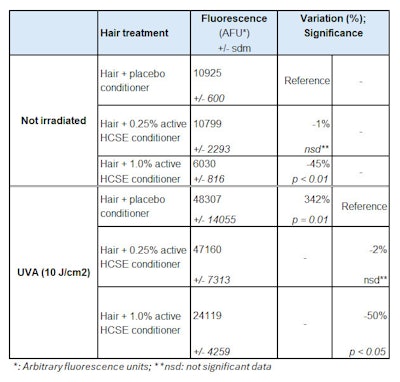
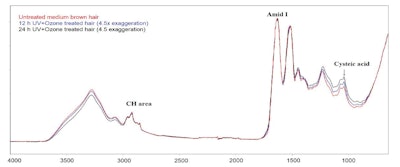
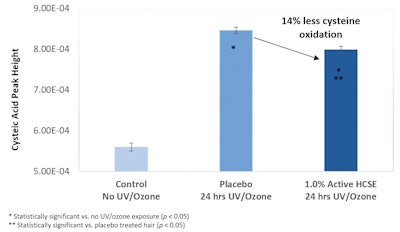
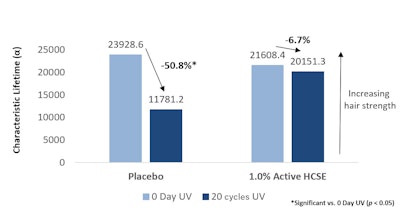
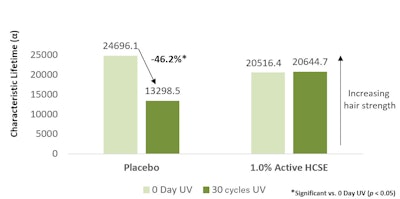

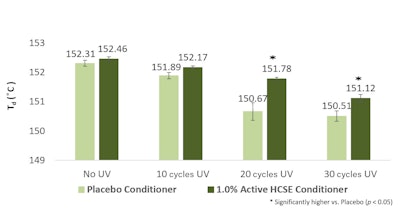
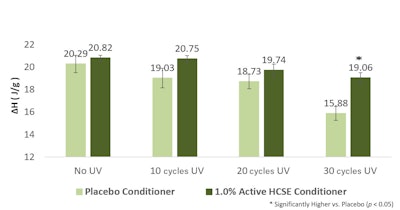

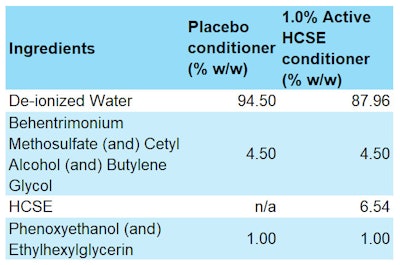
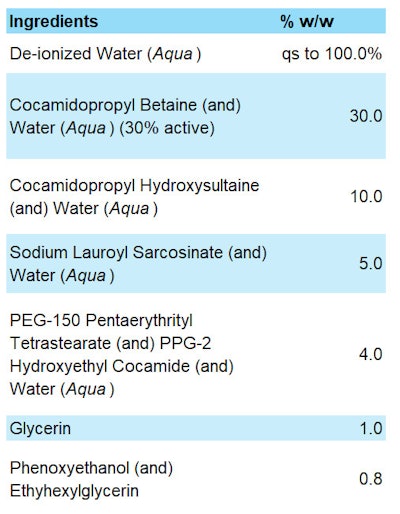

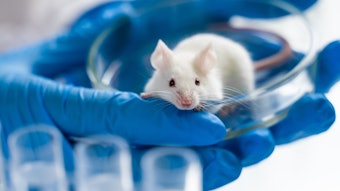


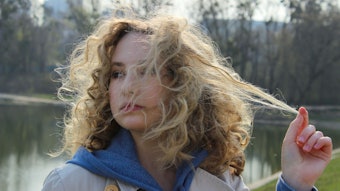
!['We believe [Byome Derma] will redefine how products are tested, recommended and marketed, moving the industry away from intuition or influence, toward evidence-based personalization.' Pictured: Byome Labs Team](https://img.cosmeticsandtoiletries.com/mindful/allured/workspaces/default/uploads/2025/08/byome-labs-group-photo.AKivj2669s.jpg?auto=format%2Ccompress&crop=focalpoint&fit=crop&fp-x=0.49&fp-y=0.5&fp-z=1&h=191&q=70&w=340)
